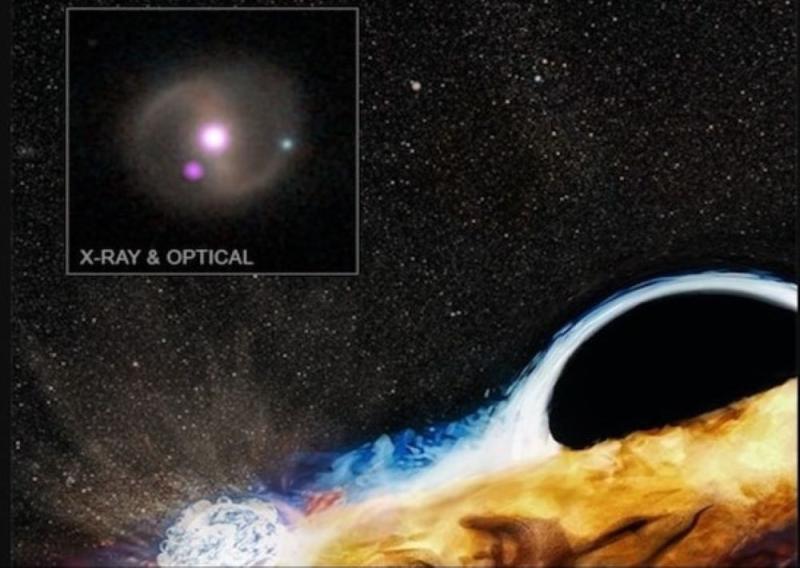
- galaxy
- 11 Oct 2024 11:53 AM
- black hole research, X-ray astronomy, NASA missions
Astronomers have made a groundbreaking discovery involving a massive black hole that is currently disrupting two celestial objects, one of which is a star. Utilizing NASA's observatories, including Chandra, NICER, and Hubble, alongside India’s AstroSat, researchers have gained new insights into the behavior of stellar debris surrounding supermassive black holes.
In 2019, astronomers observed a star that ventured too close to a supermassive black hole, resulting in a tidal disruption event (TDE) where the star was torn apart by intense gravitational forces. The remnants of this star formed an accretion disk—a swirling mass of stellar material encircling the black hole. While this disk remained stable for several years, recent observations revealed an extraordinary development: the disk expanded and began to interact with a second object, possibly another star or a smaller black hole, which had been orbiting safely at a distance.
This second object now collides with the stellar debris disk every 48 hours, creating dramatic X-ray eruptions each time. As Matt Nicholl from Queen's University Belfast described, “Imagine a diver repeatedly entering a pool and causing a splash each time,” with the disk acting as the pool and the star as the diver.
Historically, astronomers have documented TDEs, which occur as a single star is destroyed by a black hole in a sudden burst of energy. Recently, a puzzling phenomenon known as quasi-periodic eruptions (QPEs) has also been noted—bright X-ray flashes from galaxy centers appearing at regular intervals but poorly understood until now.
Dheeraj Pasham from the Massachusetts Institute of Technology (MIT) commented on the significance of this discovery: “It’s like solving two cosmic mysteries at once.” The event, designated AT2019qiz, was initially identified by the Zwicky Transient Facility at Palomar Observatory in 2019. As the accretion disk expanded, NASA's Chandra Observatory captured three separate sets of X-ray data, clearly indicating the occurrence of repeated eruptions.
NICER, another NASA instrument aboard the International Space Station, confirmed that these X-ray eruptions occurred consistently every 48 hours. Complementary observations from NASA's Swift observatory and India’s AstroSat further bolstered these findings. AstroSat’s ability to monitor both X-rays and ultraviolet (UV) light provided critical data, helping astronomers confirm the size of the accretion disk and the repetitive nature of the eruptions.
Gulab Dewangan from the Inter-University Center for Astronomy & Astrophysics (IUCAA) in Pune emphasized AstroSat's role, noting, "India's AstroSat mission provides unique UV/X-ray capability for studying such events." The mission successfully detected the source AT2019qiz, but X-ray eruptions were the only ones observed.
Andrew Mummery of Oxford University highlighted the importance of this breakthrough: “We now realize we need to wait a few years for the eruptions to 'turn on' after a star has been torn apart, as it takes time for the disk to spread out far enough to encounter another star.”
This remarkable discovery not only sheds light on the dynamics of stellar debris around black holes but also opens new avenues for exploring the complex interactions in our universe.






































